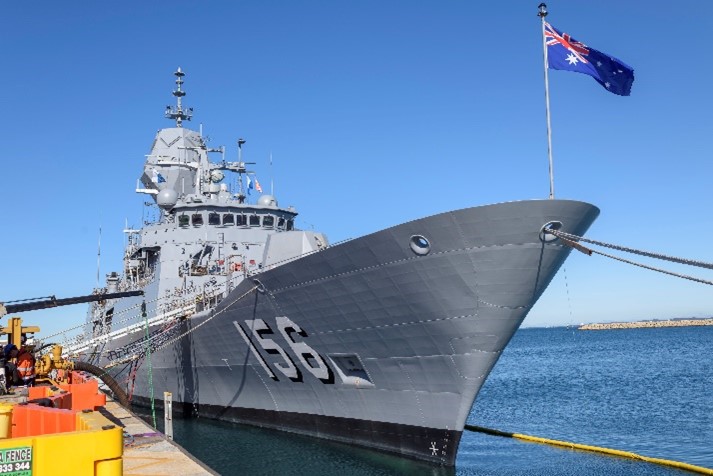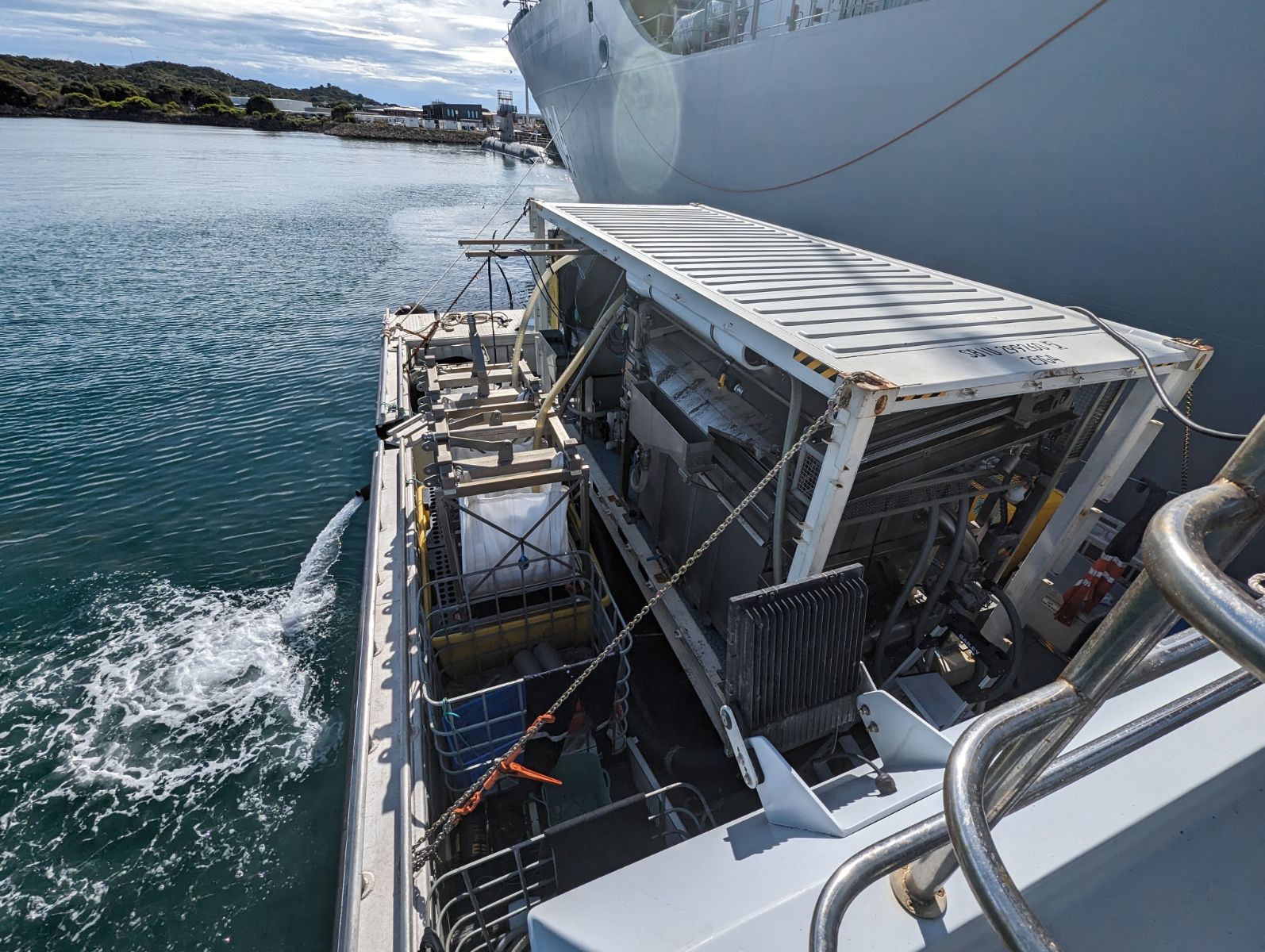Long-term collaboration provides sovereign navy sustainment capacity.
In today's rapidly evolving global landscape, the importance of maintaining a strong naval sustainment capacity cannot be overstated. A nation's ability to sustain and support its naval fleet is vital for ensuring security, protecting maritime trade routes, and projecting power. To achieve this, long-term collaboration between various stakeholders is crucial. This article delves into the significance of sovereign navy sustainment capacity and explores how long-term collaboration can foster this capability.

Importance of sovereign Navy sustainment capacity
A nation's sovereign navy sustainment capacity refers to its ability to independently maintain and support its naval assets. This includes everything from routine maintenance and repair to managing spare parts inventory and conducting major overhauls. Without a robust sustainment capacity, a country risks being at the mercy of external entities for critical support services, which can compromise national security. By investing in and developing its own naval sustainment capabilities, a nation can maintain control over its fleet and ensure its readiness at all times.
Explanation of long-term collaboration
Long-term collaboration is a strategic approach where multiple parties come together to pool their resources, knowledge, and expertise in a sustained effort to achieve a common goal. In the context of sovereign navy sustainment capacity, this collaboration involves forging partnerships between government agencies, naval forces, research institutions, defence contractors, and other relevant stakeholders. By working together over an extended period, these entities can leverage each other's strengths, streamline processes, and achieve superior outcomes.
Historical Context
To understand the evolution of naval sustainment needs, it is essential to examine the historical context. In the past, naval sustainment was primarily handled in-house, with naval forces relying on their own resources and personnel for maintenance and support. However, as naval fleets grew more sophisticated and complex, the need for specialized knowledge and equipment became evident. This led to the emergence of third-party sustainment providers, who offered their services to navies around the world.
Previous attempts at collaboration in naval sustainment have yielded mixed results. While some partnerships have been successful, others have faced challenges due to differences in organizational culture, competing interests, and inadequate communication channels. However, these experiences have provided valuable insights into what works and what doesn't when it comes to long-term collaboration in naval sustainment.
Benefits of Long-term Collaboration
One of the key benefits of long-term collaboration in naval sustainment is cost-effectiveness and efficiency gains. By pooling resources and sharing the financial burden, collaborating entities can achieve economies of scale and reduce overall costs. This is particularly important in an era where defence budgets are under scrutiny, and governments are seeking ways to maximize returns on investment. Additionally, long-term collaboration allows for the development of standardized processes and procedures, leading to increased efficiency and reduced downtime.
Another advantage of long-term collaboration is enhanced technology and knowledge transfer. Through collaborative efforts, organizations can tap into each other's expertise and leverage cutting-edge technologies. This enables the development and implementation of advanced sustainment practices and the adoption of innovative solutions. By sharing knowledge and best practices, collaborators can collectively raise their capabilities and keep pace with evolving threats and technologies.
Case Study Examples
To illustrate the benefits of long-term collaboration, it is helpful to examine successful examples in naval sustainment. One such case is the partnership between the Australian Department of Defense and Franmarine Underwater Services, a leading naval sustainment provider. This collaboration has delivered a sovereign naval sustainment capability that ensures the availability and readiness of Australia's naval fleet. By leveraging Franmarine's expertise in ship maintenance, repair, and sustainment, Australia has achieved significant cost savings and improved operational efficiency.
Lessons learned from previous efforts in long-term collaboration can also inform future endeavors. One key lesson is the importance of clearly defined roles and responsibilities. Effective collaboration requires a shared understanding of each party's contributions and expectations. Establishing clear governance structures and communication channels is also crucial for ensuring effective coordination and decision-making. Additionally, ongoing engagement and regular evaluation of the collaboration's progress are essential to identify areas of improvement and address any emerging issues.

Challenges and Considerations
While long-term collaboration offers numerous benefits, it is not without its challenges. One of the primary obstacles is the complexity of coordinating multiple stakeholders with different priorities and objectives. Effective collaboration requires alignment of interests and a shared vision for success. This can be achieved through open and transparent communication, regular consultations, and the establishment of common goals and metrics.
Strategies for overcoming challenges in long-term collaboration include investing in relationship-building activities, fostering a culture of trust and mutual respect, and promoting knowledge sharing and collaboration. Building strong partnerships takes time, effort, and commitment, but the rewards are significant in terms of improved sustainment capabilities and increased operational readiness.
Future Outlook and Recommendations
Looking ahead, there are ample opportunities for enhancing sovereign navy sustainment capacity through long-term collaboration. Advancements in technologies such as artificial intelligence, big data analytics, and digital twins offer new avenues for improving sustainment processes and decision-making. By harnessing these technologies and exploring emerging trends, entities can stay ahead of the curve and adapt to evolving operational requirements.
To foster successful long-term collaborations in naval sustainment, certain best practices should be followed. These include developing clear collaboration strategies, aligning incentives and objectives, establishing effective governance and accountability mechanisms, and investing in regular training and professional development. Additionally, maintaining open lines of communication and actively seeking feedback from all stakeholders can help identify and address any challenges or areas for improvement.
Conclusion
In conclusion, long-term collaboration plays a vital role in developing and maintaining a sovereign navy sustainment capacity. By combining resources, knowledge, and expertise, collaborating entities can achieve cost-effectiveness, drive efficiency gains, and enhance technology transfer. Case studies of successful partnerships, along with lessons learned from past efforts, provide valuable insights into effective collaboration strategies. While challenges exist, they can be overcome through effective communication, clear governance structures, and a commitment to building strong partnerships. As nations look to the future, embracing long-term collaboration will be key to enhancing their sovereign navy sustainment capabilities and ensuring security in an ever-changing world.
